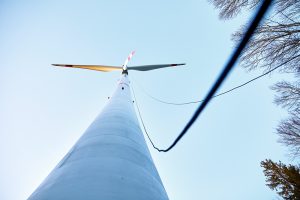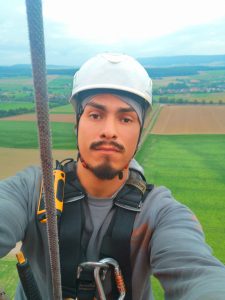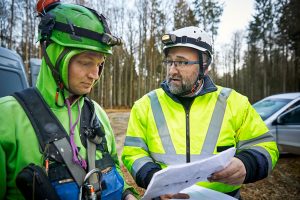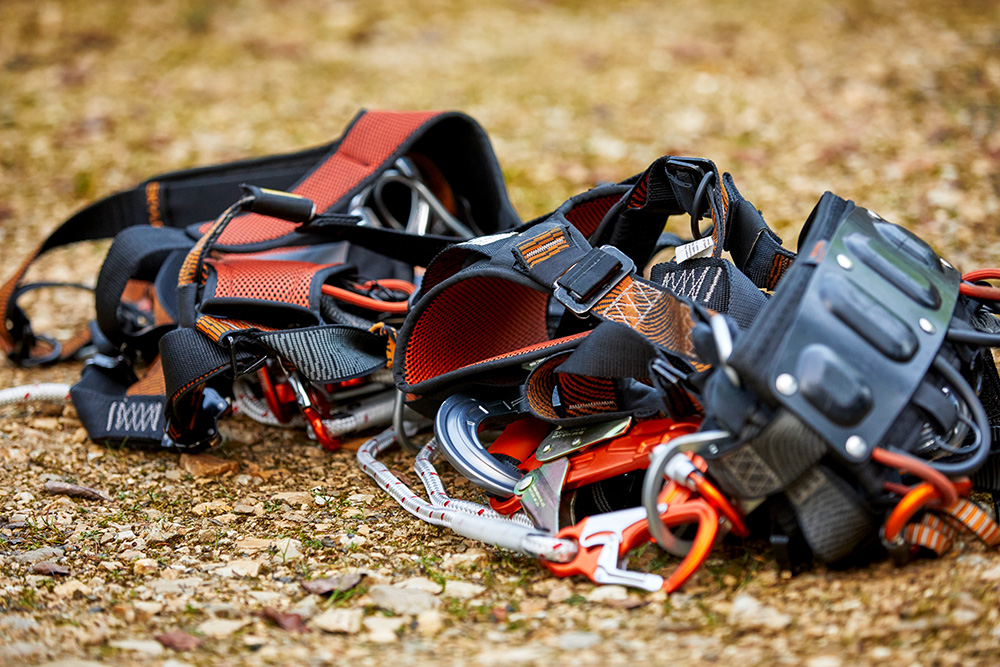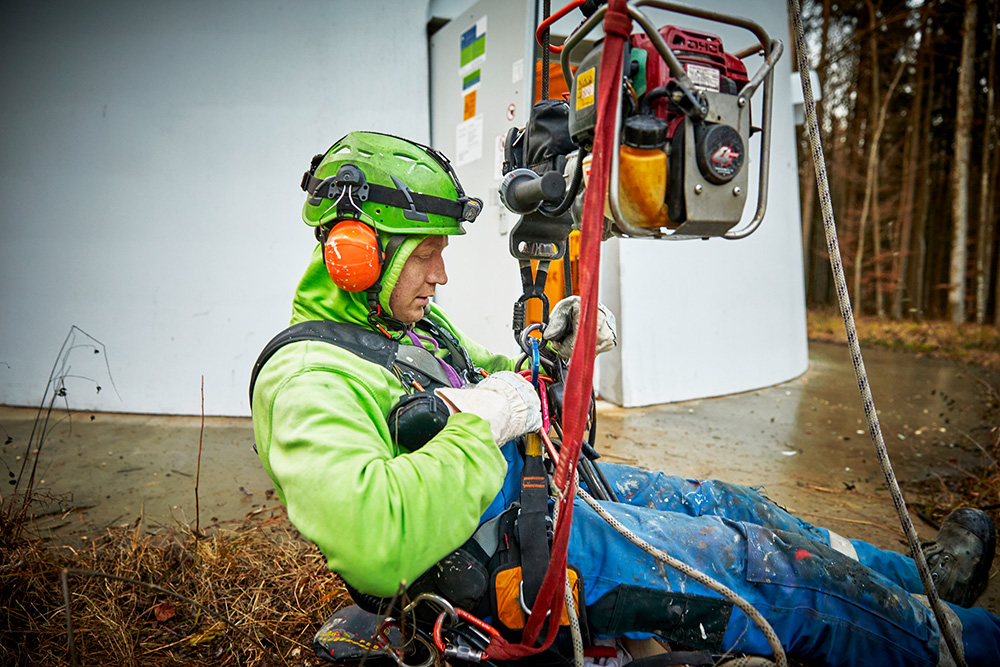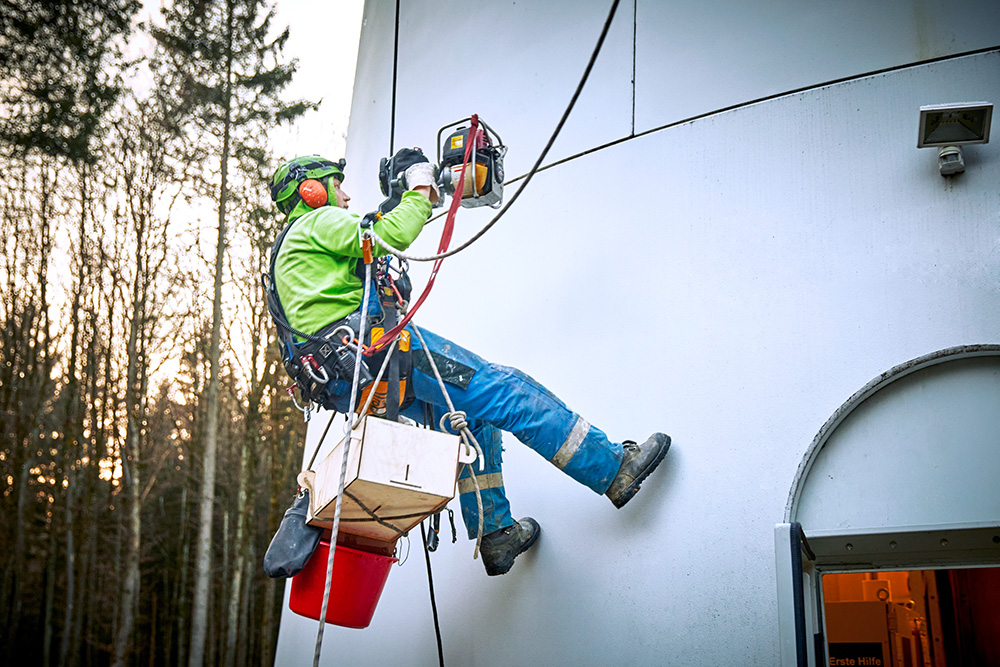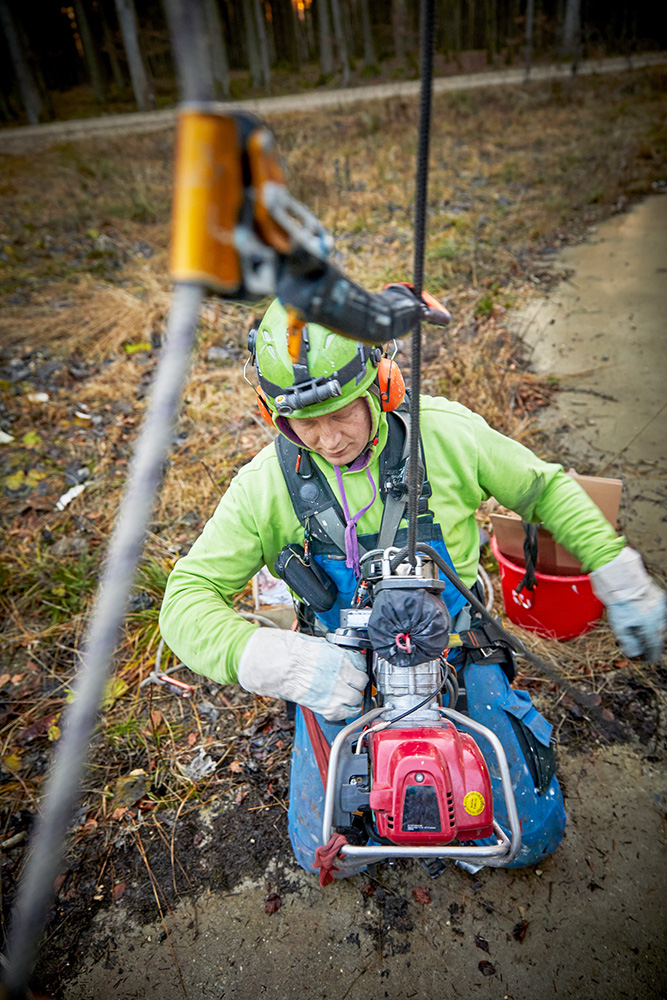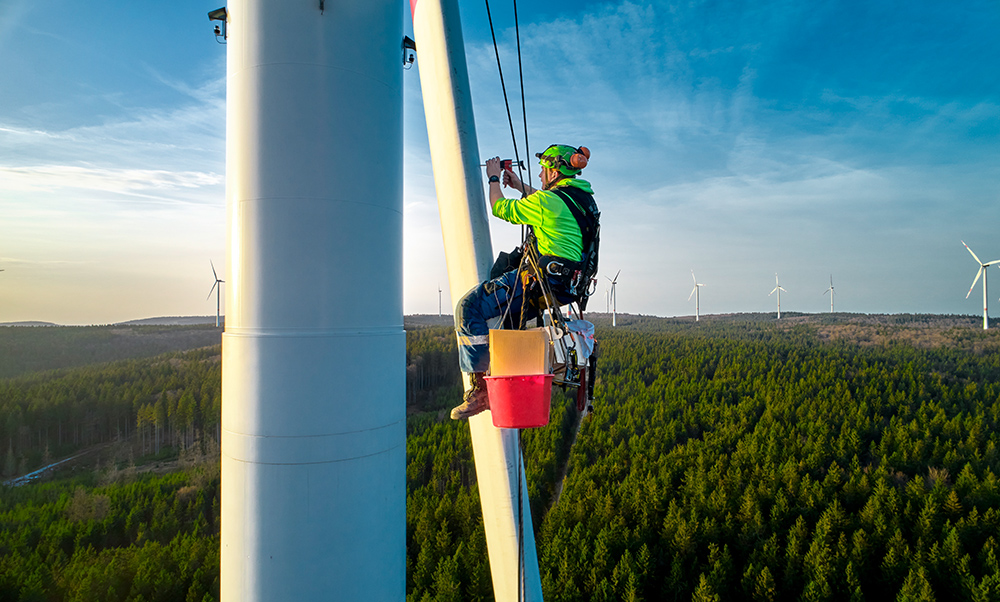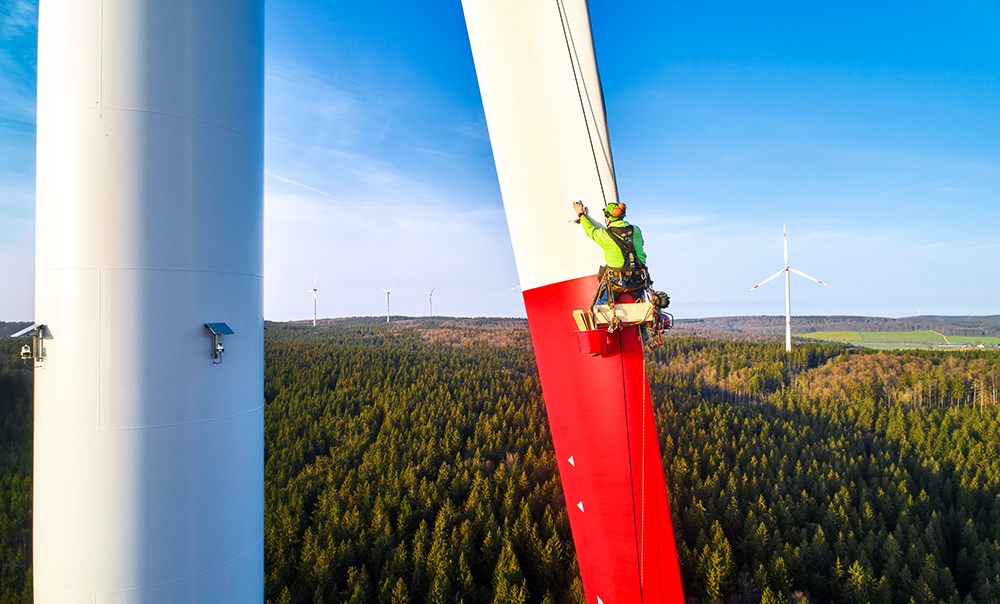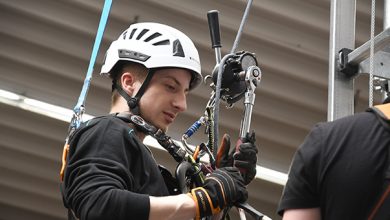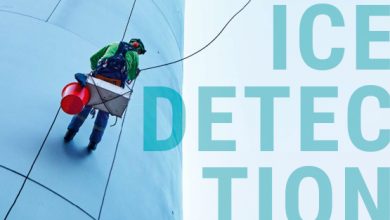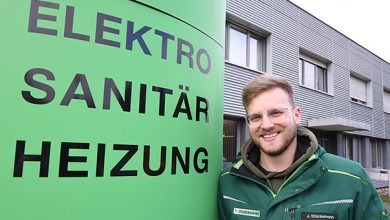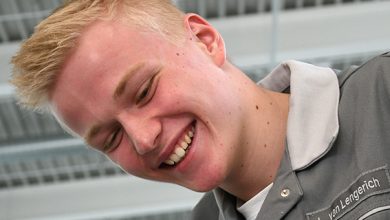What use is the most functional, practical and clever system, the most sophisticated control electronics and the most sophisticated sensor technology if they are not attached by expert hands where it makes sense? Only the skills of an industrial climber like Selvin Keller brings the ice detection system from Phoenix Contact to where it can unfold its digital protective shield. Handicraft in the extreme.
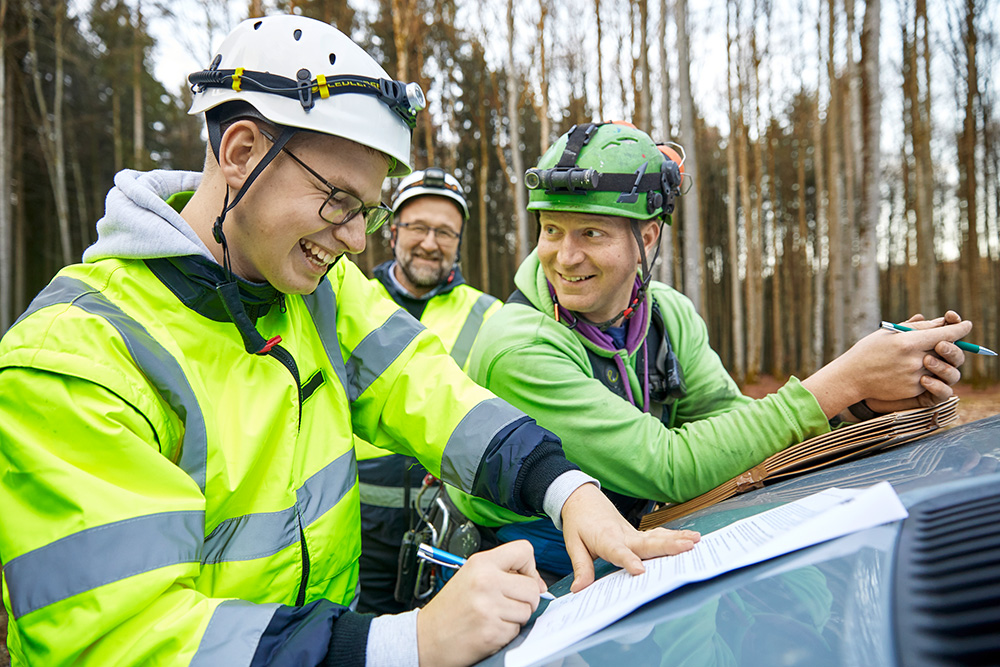
The sun is shining, but it’s lousy cold. No wonder, it’s December. And we’re outside, in the middle of nature. Our colleagues from the wind team at Phoenix Contact, Karl-Heinz Meiners and Lukas Christ, are currently discussing the situation with Tommy Liebmann and Selvin Keller. The two are industrial climbers. And out here they have the task of bringing the new ice detection sensors from Phoenix Contact to where they belong – namely to the wings of a wind turbine.
Climbing on Giants
In this case, these are three giants at once, whose hubs are enthroned above the forest floor at a height of 140 metres, while the individual blades, with a length of more than 70 metres, stretch out into the steel-blue sky even higher. One of the wings is just about to be aligned so that it points downwards. Welcome to the workplace of Selvin Keller and his colleague.
Industrial climbers only have a lonely job at first glance, all alone on the facade, tower or rotor blade. Because: teamwork is one of the basic requirements, as the 27-year-old Keller explains. “We always work as a team. One person secures, one person climbs. That has long been the prescribed standard.” Colleague Liebmann is already in the wind tower and can be taken up to the nacelle by the elevator. There he climbs up to the turbine roof, naturally secured, and lets down the climbing ropes on the outside of the tower.
No place for adrenaline junkies
“Industrial climbing has little in common with sport climbing,” says Selvin Keller. “We use rope access technology to get to places that would otherwise be very difficult or impossible to reach with scaffolding or lifting equipment. The task is not climbing, but working on site. That is why most height workers are trained craftsmen and skilled workers who simply make their workplace a little more exotic.” Grins and adds: “I am one of the few exceptions, because I am actually a trained retail salesman. I came across rope technology at a house running event organised by Jochen Schweizer. And it fascinated me and I couldn’t let go.” In the meantime, Keller has combined passion and his trained profession, because he has founded a company that offers work on the rope.
No sooner is he down again than Tommy Liebmann joins the briefing with the Phoenix Contact experts. Meiners and Christ pull out the installation plans and explain exactly where the ice detectors have to be placed. The two height installers listen attentively. Then they get to work, speaking into the air. Liebmann stows away working materials and ice sensors in a robust box that hangs on the dishes. The workbench under the back, so to speak. Then a rattling petrol engine is started by a cable pull. But instead of a lawn mower or a chain saw, motorized propulsion is used to gain height. This is because the motor drives a device that works its way up the rope and thus takes the climber to his or her airy workplace at a height of more than 100 metres.
Fair-weather workers
While the “climbing bike” Liebmann reliably pulls up with his equipment, Keller secures his colleagues and keeps in contact via radio. The twilight sets in. No problem for the two professionals: “We have light with us.” Keller and his colleagues only get worry lines when the weather changes: “In the wind industry, which I specialize in, we are actually total fair-weather workers. However, cool weather and wind are also part of our everyday life. We are very exposed at high altitudes. I experienced a really hairy situation when a storm suddenly came up and I was hanging from the rotor blade. I was really glad to get down again safely.
Tommy Liebmann has now arrived at one of the points where he has to apply an ice detection patch. While it is already getting dark down in the forest, the altitude professional is experiencing a fantastic sunset. But he has no eyes for it: “We want to finish today, then we can go back tomorrow.” Industrial climbers seldom have permanent employers; they usually work as freelancers in the most diverse locations and with changing tasks. “Attaching the sensors is easy for us, as only the surface is sanded and cleaned. After all, we don’t go deep into the fiber fabric. Then we’re already sticking. We can also move very quickly and safely on the rotor blade.”
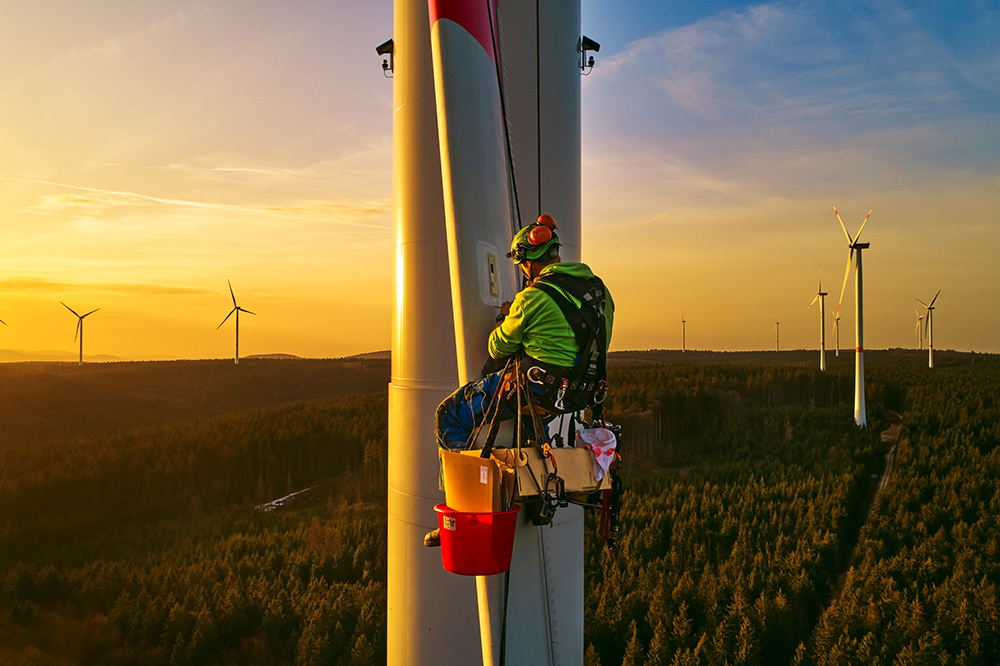
Dangerous pressure of time
If you are already dealing with one of the rare climbing exotics, the question of the really dangerous assignments should not be missing. Keller shrugs his shoulders. “It only becomes dangerous for us when the client puts pressure on us and safety is neglected. One colleague has already had the safety ropes pulled in by an active screw conveyor on the ground while he was still working in a sugar silo. That almost ended badly. Another climber was hit on the head by lumps of ash in a waste incineration plant because safety measures had been neglected. Wherever work is done too fast, where standstill is not accepted and safety is not a priority, it can be dangerous. And in our job, mistakes just end fatal.” With a view to the colleague at the top of the blade, he adds: “But in the wind industry this does not happen, because here safety really does enjoy a high priority.
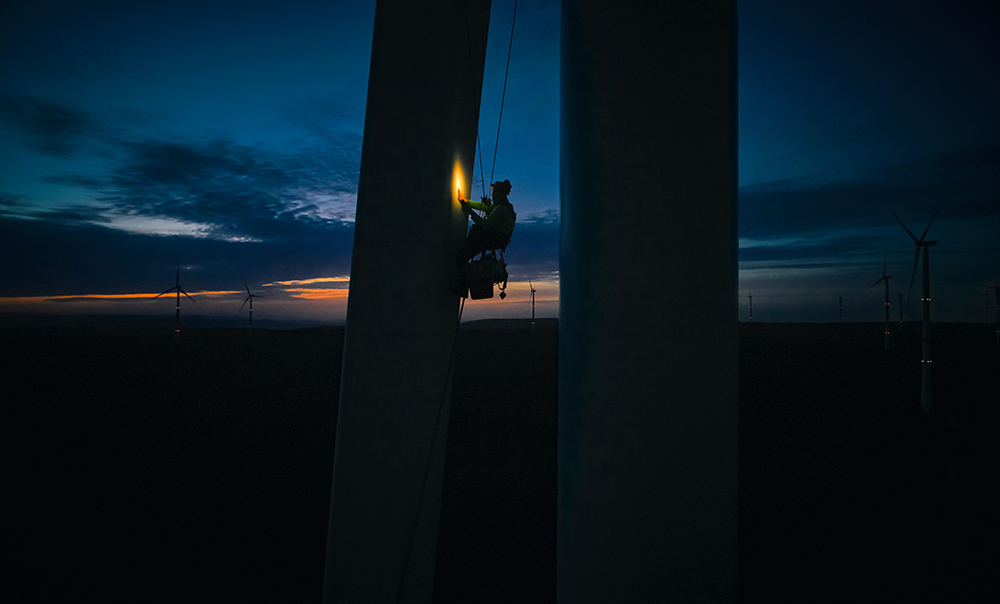
We got our pictures in the can, the story in our heads. Slowly the cold creeps through the soles of our shoes. In the forest it is pitch dark, only at a height of about 120 meters the lonely climber moves on the rotor blade, illuminates his workplace with his strong helmet lamp. And although we know he is well secured, we are full of respect for the performance of the two experts on the rope. Craftsmanship over a black abyss – a job for people with no fear.
